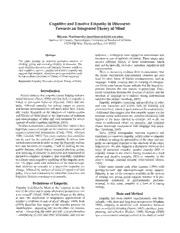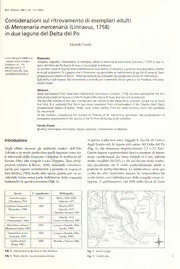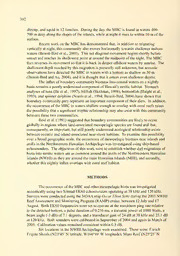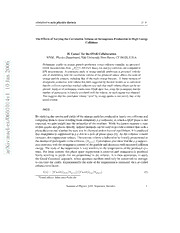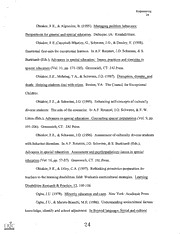
ERIC ED439551: Empowering Culturally Diverse Exceptional Learners in the 21st Century: Imperatives for U.S. Educators. PDF
Preview ERIC ED439551: Empowering Culturally Diverse Exceptional Learners in the 21st Century: Imperatives for U.S. Educators.
DOCUMENT RESUME EC 307 730 ED 439 551 Obi, Sunday O.; Obiakor, Festus E.; Algozzine, Bob AUTHOR Empowering Culturally Diverse Exceptional Learners in the TITLE 21st Century: Imperatives for U.S. Educators. PUB DATE 1999-00-00 NOTE 26p. PUB TYPE Opinion Papers (120) EDRS PRICE MF01/PCO2 Plus Postage. Bilingual Education; *Cultural Differences; *Disabilities; DESCRIPTORS Educational Needs; Elementary Secondary Education; Ethnic Discrimination; *Ethnic Groups; *Gifted; *Multicultural Education; Regular and Special Education Relationship; School Demography; Student Empowerment Disproportionate Representation (Spec Educ) IDENTIFIERS ABSTRACT This article examines issues in the education of culturally different students in the nation's schools. The first section examines factors underlying the future education of this population including demographic increases in numbers of culturally diverse students in the schools, historic discrimination against these groups, and under-representation or over-representation of some ethnic minorities in certain special education categories. The second section addresses multidimensional needs of culturally diverse exceptional learners such as nonbiased assessment, bilingual education, and direct intervention to reduce prejudice. The last section suggests ways to enhance empowerment possibilities for culturally diverse exceptional learners. Educators are (1) understand fundamentals of general and special education; urged to: (2) shift assessment and instructional paradigms, and (3) put practical perspectives on learned concepts. (Contains 59 references.) (DB) Reproductions supplied by EDRS are the best that can be made from the original document. Running Head: EMPOWERING Empowering Culturally Diverse Exceptional Learners in the 21st Century:Imperatives for U.S. Educators Sunday 0. Obi, Ed.D. Associate Professor of Education Kentucky State University Frankfort, Kentucky 40601 (502) 227-5919 (W) Festus E. Obiakor, Ph.D Professor of Psychology and Special Education Department of Exceptional Children University of Wisconsin-Milwaukee Milwaukee,Wisconsin 53201 Bob Algozzine, Ph.D. Professor of Research, Technology & Education Charlotte University of North Carolina Charlotte, North Carolina 28223 U.S. DEPARTMENT OF EDUCATION (704) 547-2912 (W) PERMISSION TO REPRODUCE AND NATIONAL INSTITUTE OF EDUCATION DISSEMINATE THIS MATERIAL HAS EDUCATIONAL RESOURCES INFORMATION BEEN GRANTED BY CENTER (ERIC) his document has been reproduced as received from the person or organization originating it. Minor changes have been made to improve BEST COPY AVAILABLE reproduction quality. TO THE EDUCATIONAL RESOURCES 2 Points of view or opinions stated in this docu- INFORMATION CENTER (ERIC) ment do not necessarily represent official NIE 1 position or policy. Empowering 3 Abstract One of the major issues facing schools today is the problem of distinguishing genuine learning problems from students who come from different cultural and linguistic backgrounds. Although difficult to define, culture is an important part of the instructional process. Differences in culture can act as effective barriers for students and families in school programming. With the rapid growth of culturally diverse learners in the United States comes a corresponding increase in the number of students who are misidentified, misassessed, miscategorized, misplaced, and misinstructed. In other words, teachers often turn to special education for assistance and to some extent, place culturally diverse students in at-risk positions that magnify denigrating stereotypes. Though many educational programs contain multicultural content, they are frequently directed toward understanding other cultures without emphasizing cross-cultural strategies for teaching students and families to participate in the cultural mainstream. This article discusses (a) factors underlying the future education of culturally diverse exceptional learners, (b) multi-dimensional needs of these learners in the 21st Century, and (c) ways to enhance empowerment possibilities for these learners. 3 Empowering 4 Empowering Culturally Diverse Exceptional Learners in the 21st Century :Imperatives for U.S. Educators Schools are faced with perpetual issues of who should be served and how and where they should be served. Clearly, traditional approaches to resolving these issues may be somewhat sophisticated but may yet lack the wisdom or the knowledge of a changing society. For instance, the issue of how best to empower culturally diverse exceptional learners has become endemic since most teachers still struggle with the infusion of multicultural education in their classroom practices. It is important that general and special educators diversify instruction so that all children can be reached. The reasons are simple. Race still matters (West, 1993); and the world is constantly changing and becoming more and more diverse (Rotatori & Obi, in press). Different people from different cultural backgrounds are sending their children to school in order to become productive citizens. The demographics of today's schools and understanding about disability are shifting at a rapid pace and educational approaches must strive to catch up with this growth. It is increasingly apparent that general and special educators must continue to learn about themselves and their own cultures to build bridges of cultural valuing, racial understanding, and human interaction (Banks, 1999; Obiakor, 1994, 1999). Most practitioners encounter students from different cultural backgrounds, and these students' characteristics differ from their conception of what is "usual" or generally expected. For example, students may be unable to read the material that the teacher is accustomed to using, or students may speak a language or dialect foreign to him/her and sometimes use this language when he/she feels that they should use Standard English. Teaching students 4 Empowering 5 who are not succeeding academically and those whose cultural backgrounds differ from that of the teacher requires changing instructional patterns and classroom procedures to facilitate academic success (Ford, Obiakor, & Patton, 1995; Grant & Sleeter, 1998). A recurring question about culturally diverse groups is whether they are disproportionately represented or identified as exceptional learners because traditional Eurocentric curriculum or strategies do not work in their favor. This question is sometimes trivialized even though overrepresentation in special education programs and underrepresentation in gifted programs have been found to be the result of reprehensible practices that reflect bias or discrimination in general and special education (Artiles & Trent, 1994). As a consequence, these practices must be corrected to address the issue of equity in school programs now and in the future. Many educators (e.g., Grossman, 1998; Obiakor, 1994, 1999; Obiakor & Utley, 1997) have argued that culturally diverse learners have been frequently misidentified, misassessed, miscategorized, misplaced, and misinstructed by poorly prepared teachers who are rigid, and insensitive to the many differences that they bring to school programs. These practices place these students in at-risk positions and perpetuate already magnified stereotypes. To this effect, general and special educators must consistently rethink their practices, revamp their strategies, and shift their paradigms as they provide services for culturally diverse learners. These challenges are greater today because of changes in family configurations. Many students do not come from the traditional two-parent family. Some even come from group homes, foster homes, streets, or homeless shelters. Obviously, as the nation changes, so do the students, and so must schools in order to meet the needs of a widely varied student population. For example, poverty is more visible in 5 Empowering 6 schools today than ever before. The question then is, Could poverty be associated with "poor" intelligence, "poor" self-concept, and "poor" ability to succeed in school.? Ironically, this question has racial, cultural, and socioeconomic implications on the education of culturally diverse exceptional learners. As a consequence, how best to empower these learners in the 21S` century must become a critical focus for general and special educators. This vision is the major thrust of this article. Factors Underlying the Future Education of Culturally Diverse Exceptional Learners Culturally diverse populations entering public schools are rapidly growing, and with that growth comes increasing numbers of students with exceptionalities. If current growth patterns continue, it is predicted that by the year 2050, almost one half of the U.S. population will be composed of people and families from different cultural and linguistic backgrounds (Salend & Taylor, 1993; Scandia National Laboratories 1993; Walker, 1993). These dramatic changes will have profound implications for educational and social institutions that interface with families. One noteworthy implication is that human service providers will be faced with ever-increasing numbers of families holding cultural values, beliefs and preferences different from their own. Given the overrepresentation of culturally and linguistically diverse students in special education programs, it is particularly important that personnel working with individuals who have disabilities and their families be capable of delivering services in ways that are culturally responsive and relevant (Ford, 1992; Grossman, 1988; Harry, Allen, & Mclaughin, 1995). Surely, revitalization and reform are needed in the future of special education to meet the complex needs of culturally diverse exceptional learners. 6 Empowering 7 Some years ago, Cummins (1989) noted that causes of culturally diverse students' academic difficulties are to be found in the ways schools have reinforced, both overly and covertly, the discrimination that certain culturally diverse groups have historically experienced in the society at large. When research results regarding the under- achievement of culturally diverse learners are examined internationally, a striking pattern emerges. The groups that currently perform very poorly at school have historically been discriminated against and regarded as inherently inferior by the dominant group. For example, in the United States, African American, Hispanic American and Native American students have all experienced subjugation by dominant groups (Ogbu, 1978). It is reasonable to argue that the educational underachievement of these groups is, in part, a function of schools that have traditionally reinforced the ambivalence and insecurity that many minority students tend to feel with regard to their own cultural identity (Cummins, 1986; Ogbu & Matute-Bianchi, 1986). More than three decades ago, Dunn (1968) indicated that it would be impossible to reverse school failure for underachievers until educators examine and change many current classroom practices. While general and special educators acknowledge that children learn differently from each other, they continue to teach each new lesson with the same approach for everyone in the class. Ironically, students are required to control their abundant natural energy and mobility needs and sit still, memorize uninteresting facts, and publicly answer questions posed by an authoritative adult as their peers listen and watch for anticipated mistakes. Dunn concluded that when they cannot answer their teachers' questions, they feel inadequate and embarrassed and lose confidence in themselves. The consequence is that they stop liking their teachers and school, and 7 Empowering 8 eventually drop out. To this effect, general and special educators must understand how to provide an education that gives equal opportunity to students regardless of gender, socioeconomic status, ethnic group, disability, or other cultural identity. In doing so, the malpractice of underrepresentation or overrepresentation of some ethnic minorities in certain special education categories will be eliminated. For example, the tendency for African American students, especially males, to be overrepresented in programs for students with emotional or behavioral disorders and underrepresented in programs for gifted and talented students must be challenged. Banks (1999), Gay (1994), Grossman (1998), and Heward (1996) confirmed that because of their racial, ethnic, social class, or other differences from the majority, many students experience discrimination or less than adequate education. Working toward an ideal society demands a multicultural perspective (i.e., understanding and accepting one another's cultures, and seeing diversity as a strength rather than a flaw). Diversity should not be viewed as a disability. Unethical practices that occur in assessment, instruction, and socialization may be the leading etiology of problems experienced by culturally diverse students. In the future, the issue of justice and fairness must be open to questions. Traditional assessment practices have frequently violated fundamental ideals of fairness and equal opportunity regardless of ethnic origin, gender, or disability. Advocates of multicultural education are concerned with the problem of finding assessment and instructional methods that help to equalize educational opportunities and achievements for all microcultural groups. The problem regarding instruction is generated by what Minow (1985) called "the dilemma of differences." The dilemma is that ignoring or recognizing students' linguistic or cultural differences can 8 Empowering 9 perpetuate and maintain inequality among ethnic or other microcultural groups. If students' differences are ignored, they will probably be given instruction that is not suited to their cultural styles or needs. They are then likely to fail to learn many socialization skills necessary for helping them develop appropriate social perceptions and interactions with others. It seems clear that fundamental changes will have to take place in schools to address the needs of diverse population of students. As pointed out in the literature (e.g., Glasser, 1986; Good lad, 1983; National Commission on Excellence in Education, 1983), assessment, instruction, behavior management, and curricular models are changing, although less rapidly than many educators would prefer, given the changing demographics and public criticism of education. Even with these gloomy pictures, the future of the education of culturally diverse exceptional learners appears bright. It appears that even in a small measure, general and special educators are slowly advancing past the knowledge phase. Their major problems appear to be in the application, analysis, synthesis, and evaluation of what they have to do to reach all students in the future. Multidimensional Needs of Culturally Diverse Exceptional Learners in the 21st Century A useful process for forecasting directions for the future in the special education of culturally diverse learners is by reviewing the various concerns of advocates who are calling for changes in the ways services are provided. The call for a change came in earnest more than a decade ago with inclusive education advocates (e.g., Will, 1986) urging general educators to become more responsible for the education of students who have special needs in school, including those who are bilingual and economically 9 Empowering 10 disadvantaged. Even though full inclusion has been endorsed by only parents and professionals, it has stimulated further debates. Schools should be about enhancing the quality of life of people and about creating better communities while trying to maintain their traditional obligations. Unfortunately, general and special educators seem to be poorly prepared to handle the changing demography. For instance, Goals 2000 calls for the education of "all students," including those with exceptionalities (U.S. Department of Education, 1995), however, it is unlikely that the needs of all "normal" and exceptional learners will be met by the turn of the century. Common issues of nonbiased assessment, second-language acquisition, and bilingual education continue to be critical in understanding the needs of culturally diverse students. To deal with these critical issues, there must be sensitivity to linguistic and cultural differences, early intervention, transdisciplinary teaming, and family involvement. When culturally diverse students are at risk or have disabilities, their educational needs become much more complex. A spirit of advocacy must be awakened to adequately prepare and throughout the educational process within special education the U.S. for the surge of culturally diverse learners entering classrooms and schools every year. As cited by Fradd and Correa (1989), advocacy effort can serve to assist diverse exceptional learners. As the profession prepares to move into the 21st century, educational research describing effective assessment and instruction is needed. Specialized instruction cannot be carried out effectively without the involvement of professionals trained to seek common perspectives and to provide comprehensive services (Fradd & Bermudez, 1989). With the call for full inclusion, the need to develop efficient and cost-effective strategies 10
The list of books you might like

Credence

The Sweetest Oblivion (Made Book 1)

The Spanish Love Deception

Corrupt (Devil's Night #1)
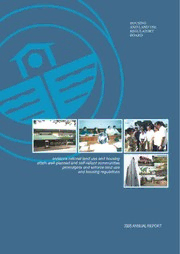
Annual Report 2005
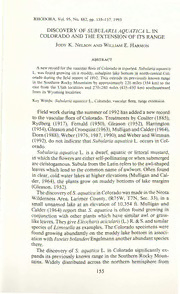
DISCOVERY OF SUBULARIA-AQUATICA L IN COLORADO AND THE EXTENSION OF ITS RANGE

Духовные христиане молокане в Амурской области во второй половине XIX - первой трети ХХ вв
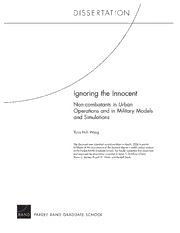
DTIC ADA487760: Ignoring the Innocent: Non-combatants in Urban Operations and in Military Models and Simulations
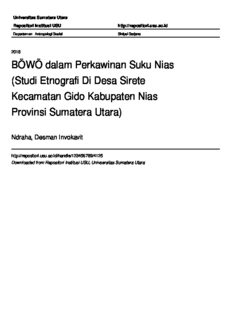
böwö dalam perkawinan suku nias departemen antropologi sosial
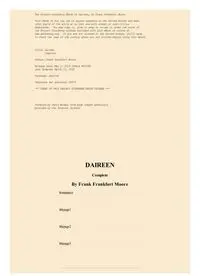
Daireen complete by Frank Frankfort Moore
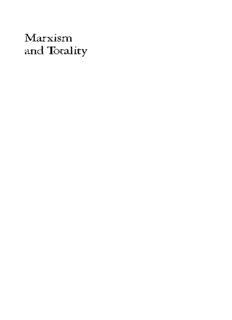
Marxism and Totality
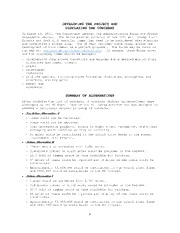
Three Creeks timber sale project final environmental impact statement
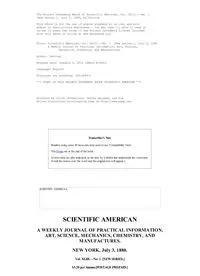
Scientific American July 3 1880

Non-classicality of molecular vibrations activating electronic dynamics at room temperature
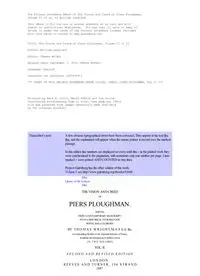
Piers Ploughman II

Lawrence Weiner

Siete velas
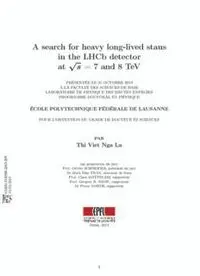
A search for heavy long-lived staus in the LHCb
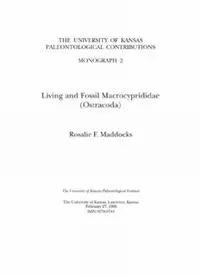
Living and Fossil Macrocyprididae

Healing Your Marriage When Trust Is Broken: Finding Forgiveness and Restoration
